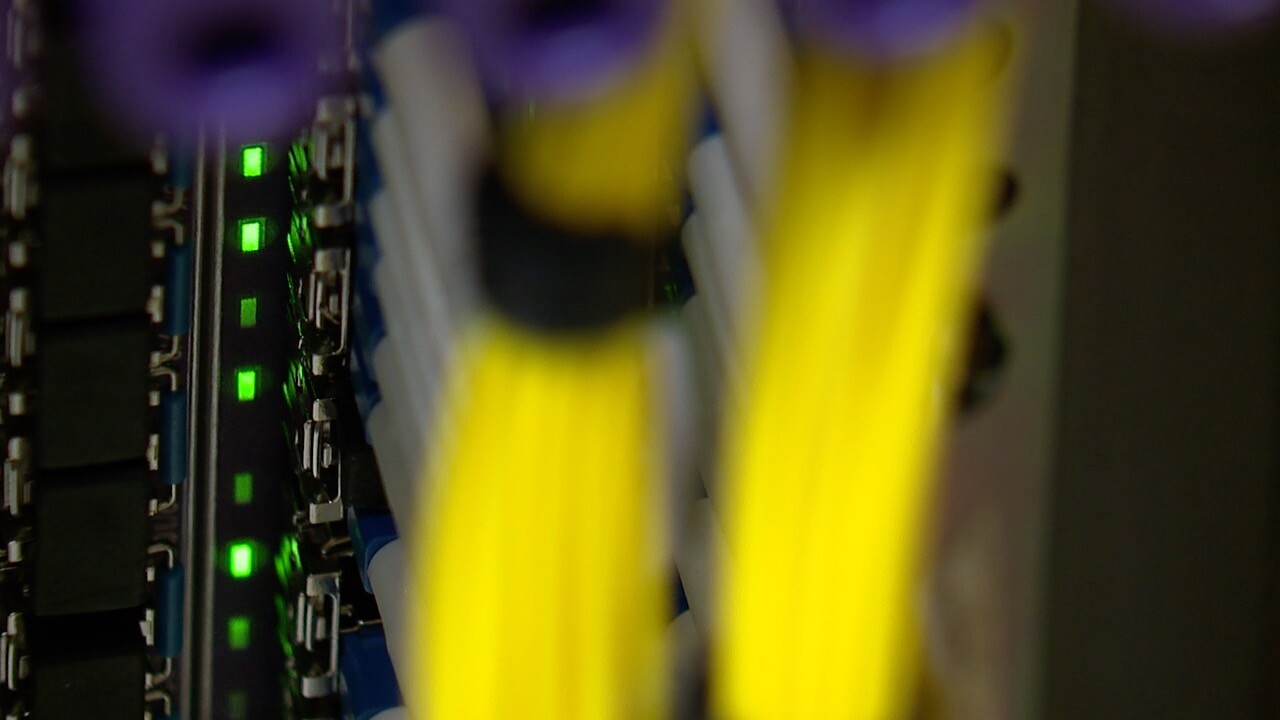CLEVELAND — Bridging Cleveland’s ‘digital divide’ was one of the key tenants of Mayor Justin Bibb’s campaign. This week, he unveiled one of the first steps in accomplishing that goal. The city is now seeking proposals from potential partners on how to best bring affordable, high-quality broadband services to some of its digital deserts.
Released on Thursday, the city’s request for proposals (RFP) broadly outlines the intended goals of Mayor Bibb’s digital adoption and affordable access initiatives. In the short term, the two-phased approach aims to provide affordable internet access to every home in Cleveland and with speeds that match consumer demand. Long term, the city’s digital equity initiatives include the possibility of making high-speed fiber-optic internet access available to all city residents.

“As we learned during this pandemic, access to high speed broadband is an economic right and a civil right in today’s world,” Mayor Bibb said in an interview Friday morning. “I think what this pandemic did for us as a city and as a nation is it really highlighted some of these vast inequities that we have been seeing when it comes to these basic, ‘kitchen table’ issues.”
Digital inequity and the lack of affordable broadband internet services has long been an issue in some of Cleveland’s most economically-challenged neighborhoods. In many respects, the pandemic didn’t create the inequities, but rather, it exposed them.
The 2019 American Community Survey, which is a product of the US Census, found that Cleveland was the worst big city for home broadband connections. The survey found that almost a third of Cleveland households lacked broadband internet subscriptions of any kind or at any speed, including mobile data plans. Additionally, nearly 80,000 Cleveland households lacked ‘wireline’ broadband connections — like cable modems, DSL or fiber internet service — in 2019. Cleveland’s non-connection rate for ‘wireline’ service was second only to the city of Detroit.
The two primary, underlying issues behind those statistics concern a household’s access to broadband as well as whether the family can afford it. The first phase of the city’s broadband plan aims to address both facets.
“We want to make sure we connect as many families as we possibly can short term, but also make sure these families and children have the education and tools they need to understand how important it is to be connected,” Mayor Bibb said.

According to the RFP, the city aims to give every Cleveland resident the opportunity to gain skills, education and support needed to effectively engage all that the internet has to offer. Additionally, another goal of the first phase is to give every resident access to an affordable, high-quality broadband service plan.
Working in the city’s favor in accomplishing those goals are the financial resources available.
Last year, the Cleveland City Council approved earmarking $20 million from the first tranche of American Rescue Plan Act (ARPA) funding to be specifically used for broadband-related initiatives. Additionally, through the Bipartisan Infrastructure Law, the Federal Communications Commission (FCC) was provided $14 billion for the Affordable Connectivity Program, a long-term affordability initiative that will provide qualifying households with monthly vouchers that will help subsidize the cost of broadband services.
Industry experts said the $30-per-month voucher could cover most — if not all — of the cost of some broadband services, especially programs like those offered by the non-profit PCs for People, which has rolled out 4G LTE internet service in parts of Cleveland and East Cleveland.

Mayor Bibb said whatever partner the city selects as a result of the RFP will have to engage residents when it comes to internet education and training.
“They have to be willing to go door to door, talk to families and children and meet them where they are so they can understand the true benefits of getting connected online,” Mayor Bibb said. “It can impact the quality of learning and education. It impacts the quality of healthcare as you’re seeing more healthcare systems moving to telehealth services. It also impacts our ability to compete. If people don’t have the digital readiness skills to take the jobs of the future, we won’t be competitive long term.”
Equally as ambitious as the first phase of the broadband plan, the second phase focuses on the physical infrastructure needed to greatly improve access and, especially, speed.
According to the RFP, the city’s goal of the second phase is for every home, business and government building to have access to fiber optic infrastructure. If the fiber optic infrastructure were to be available, the city could make strategic investments in the deployment of ‘smart city’ assets, which use connected sensors, lights and meters that collect and analyze data. In turn, that data can be used to make city services run more efficiently. Additionally, smart city technologies like the city’s network of surveillance camera and real time crime center, can be utilized by public safety officials.
Despite the goal of widespread access to a fiber optic network, Mayor Bibb does not anticipate the creation of a municipal broadband service like FairlawnGig or Medina Fiber.
“I think there are a trusted partners locally and across the country that have done this very well. I don’t think we need to re-invent the wheel,” Mayor Bibb said. “We have enough issues that we’re managing at City Hall but I think having a true public-private partnership to address our digital equity needs is the best thing I can do to move our community forward.”



